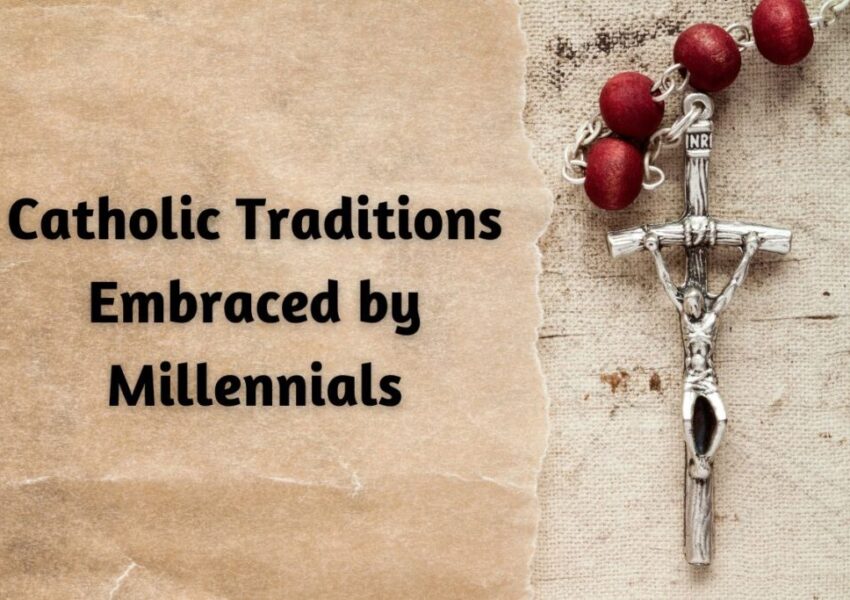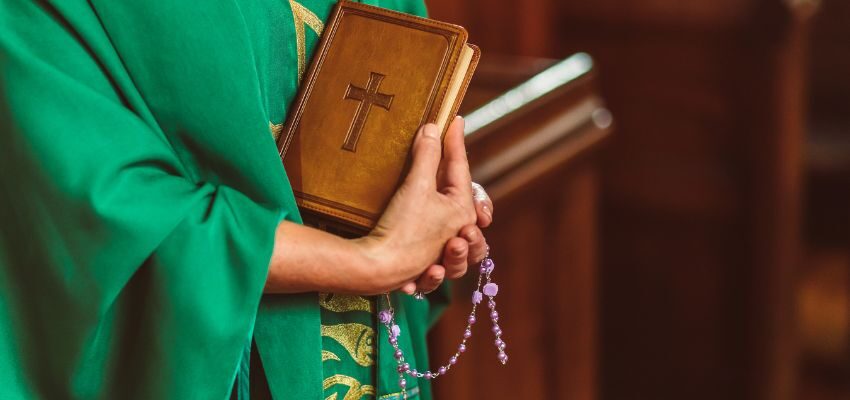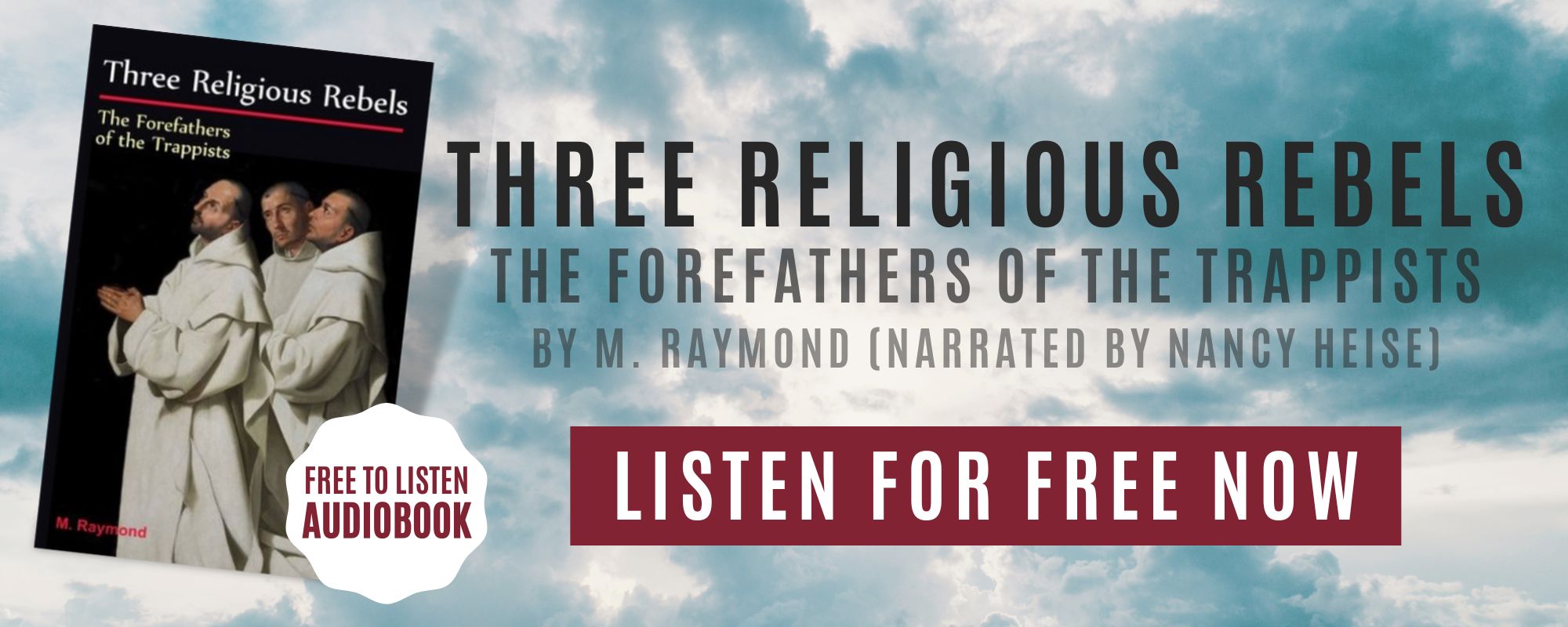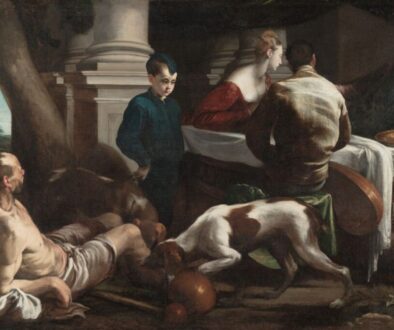5 Catholic Traditions Embraced by Millennials

Published February 14, 2024
Many people mistakenly believe that Catholic traditions don’t fit into fast-paced millennial life. But that isn’t exactly true.
TIME Magazine, in its 2013 article, branded millennials as the “Me, Me, Me Generation”. The same article also stereotyped them as lazy, shallow, and self-obsessed. This generation seems to be forever glued to their mobile or laptop screens.
Yet, as with all things, a sweeping generalization can never be construed as the truth. Millennials continue to prove that they’re more than the selfish, entitled narcissists they’re labeled to be.
Young Catholics, in particular, have shown more zeal in their faith than previous generations. Several Catholic news websites report that more millennials favor traditional liturgy.
Silent retreats and soul-searching sessions for young adults tend to sell out fast. Interest in church teachings, the lives of saints, and prayers have increased. Furthermore, they’ve found a way to merge technology and their Catholic faith.
Catholic Traditions Embraced By Millennials
Let’s take a closer look at some Catholic traditions embraced by millennials.

1. No Meat On Lent
CARA published a study in 2016 that revealed that 58% of millennial Catholics still don’t eat meat during Lent. This figure is only three points lower than ten years ago. This suggests that millennials aren’t giving up on this tradition anytime soon.
The Bible says nothing about not eating meat on Lent. Yet, it remains one of our time-honored religious traditions. The practice is believed to have started in the 1st century. According to apostolic tradition, meat is so good that giving it up is a form of sacrifice. It’s also associated with feasts and celebrations. Commemoration of Christ’s death isn’t the right day to celebrate and be merry. We reserve those for occasions like Christmas and Easter.
In many cultures, meat is also so expensive that it’s considered a luxury. People turned to cheaper meal options. They chose fish and vegetables to uphold Catholic social teaching of simplicity. This ideology resonates with millennials’ penchant for an uncomplicated, minimalist lifestyle.
2. Church Veils
Catholic women largely abandoned the tradition of wearing church veils in the ’60s. The common belief at that time was that it resembled gender inequality. But millennials seem to be thinking the exact opposite.
Many millennial women from various backgrounds proudly admit to wearing veils during mass. They agree that it’s both humbling and exalting. Samantha Skinner, a teacher from North Dakota, said that it made her feel humble and respectful. Forest Hempen from Ohio views it as a symbol of “authentic femininity.” She agrees that the veil signifies beauty, humility, and feminine dignity.
But why do Catholic women wear veils in the first place?
The scripture contains many verses about veils and head coverings. This is particularly true in the Old Testament. But the apostle Paul’s letter to the Corinthians seems to be the basis for this practice. Paul said, “Every woman who prays or prophesies with her head uncovered dishonors her head.”
But modern theology interprets this less literally. Some theologians believe that our hair is enough to cover our heads today. Nevertheless, wearing veils is making a comeback. It’s an enduring symbol of Catholic identity, even in the modern era.

3. Charity
Christians believe strongly in charity. Millennials, especially Catholics, are fully embracing this tradition.
Thanks to their digital lifestyle, millennials are more aware of social issues. That’s why they’re more likely to take part in charity drives. They’re also more likely to volunteer in projects.
Volunteerism has gained more traction over the past few years. Many are choosing to spend their gap year in volunteer programs. A 2015 survey also revealed that 84% of working millennials have donated to charities.
Millennials have also found a way to integrate technology with charity. More and more churches are now introducing cashless donations using payment apps. This appealed to millennials wanting to donate to charity even from the comforts of their home.

4. Sacraments
More and more reports are pointing towards America’s youth seeking sacramental learnings.
Many believe that this epiphany is due to the generation’s craving for the stability of sacraments and liturgy. Baby boomers and Gen X put more emphasis on personal expression when praying. Millennials, on the other hand, long for the solemnity of sacraments.
No exact data points out the reasons why millennials prefer sacraments. One theory is that it’s constant, unchanging, and anchored on liturgy. In other words, it’s the complete opposite of the fast-paced world they’re living in.
Some even attested that they found the interactive prayers deeply meaningful and moving. A Catholic priest commented that the church’s growth didn’t come from older people returning to recent traditions. Instead, it’s from the younger generation looking for older traditions.

5. Daily Prayer And Reflection
This is one of the most common Roman Catholic traditions embraced by millennials. This is evident in the number of prayer and reflection apps around. Millennials are using technology to deepen their connection with God.
Daily prayer and reflection is an essential aspect of Christian life. The Catholic church even has a calendar containing guides on what scriptures to read daily. Daily devotionals and prayer journals have helped the past generations deepen their spirituality.
Like their predecessors, millennials also believe in the power of prayer. They see it as the best way to communicate with God. Millennials express their frustrations, dreams, and gratefulness as the ultimate form of worship.
However, millennials are more fond of structured prayers than the previous generations. Where Baby Boomers and Gen X prefer worship songs, this generation likes less fluff. They’re content with a few relatable liners. These hit close to home and can be read in silence while commuting to work. Hence, the popularity of prayer apps.

Embracing Tradition In The Modern Age
Millennials embrace age-old Catholic traditions in the contemporary world. They find a harmonious blend of the sacred and modern. During Lent, most millennials find stability and spiritual depth by making sacrifices. They also wear church veils, are charitable, and use daily prayer apps. The call is to take part in these traditions and weave a vibrant future that bridges the sacred and the contemporary. It’s time to rediscover, reflect, and reconnect with Catholic traditions. In this age of constant change, you’ll find solace and strength in the enduring traditions that have shaped our faith for centuries.
Seek a Deeper Connection with God and Join Lay Cistercians of South Florida
Lay Cistercians of South Florida, is a community of lay people who seeks to have a deeper connection with God by living a life inspired by the monks and nuns through Lay Monasticism. Learn more about what is a Lay Cistercian on our website. Anyone who aspires to do the same as us, and is a confirmed Catholic is welcome to join us! We meet every second Saturday of the month at Emmanuel Catholic Church in Delray Beach, Florida.

This Content Has Been Reviewed For Accuracy
This content has undergone comprehensive fact-checking by our dedicated team of experts. Discover additional information about the rigorous editorial standards we adhere to on our website.

About The Author
Hello there! I’m Corinne Grace. I believe in the power of storytelling to connect and educate, which is why I strive to bring each article to life with clarity and purpose. It’s not just about what’s written, it’s about making an impact on the reader.




